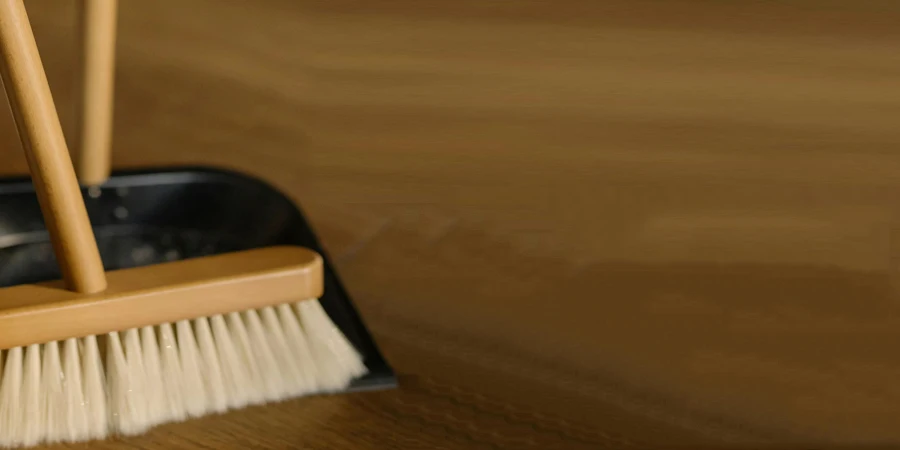Table of Contents
• Introduction
• Market overview
• Different types and their features
• Things to consider when selecting products
• Conclusion
Introduction
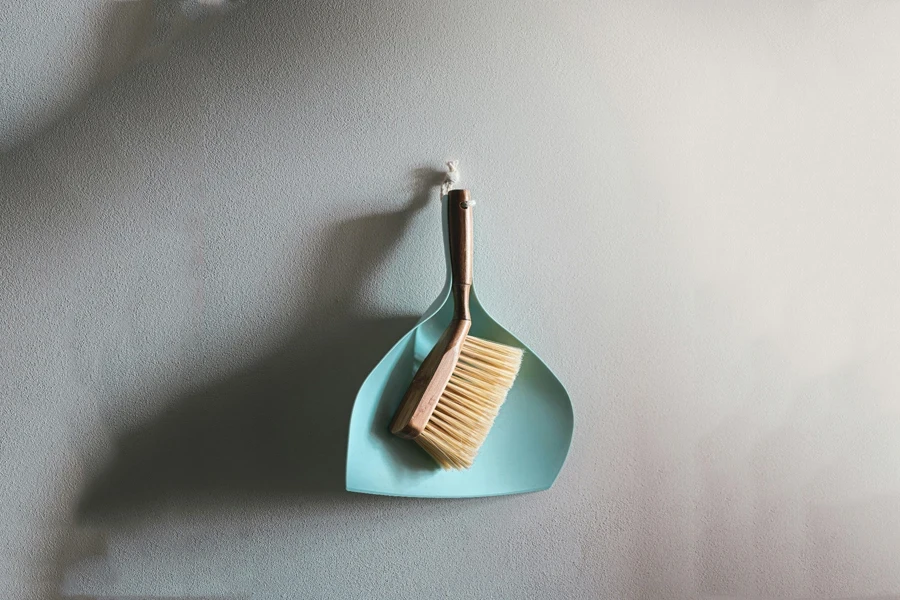
Brooms and dustpans play a crucial role in maintaining cleanliness and hygiene across residential, commercial, and industrial settings. Their effectiveness in removing dirt and debris ensures a healthier environment, preventing the spread of germs. With advancements in design and materials, modern brooms and dustpans offer enhanced functionality and durability. Understanding the market trends and types of these essential cleaning tools can help businesses make informed purchasing decisions. This article explores the market landscape, various types, and key considerations for selecting the best brooms and dustpans.
Market overview
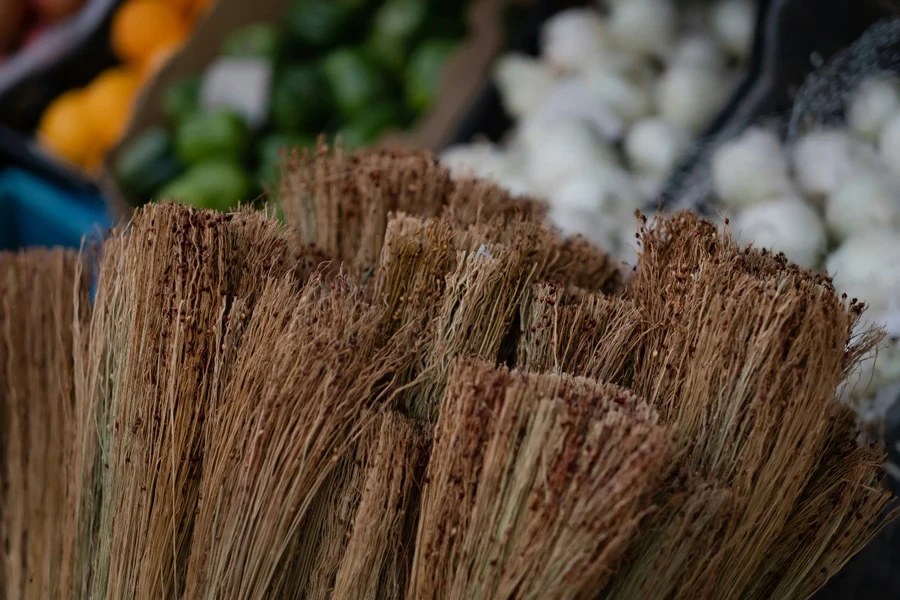
Market scale and growth
The global dustpans market was valued at USD 2.85 billion in 2023 and is projected to grow to USD 4.6 billion by 2032, with a compound annual growth rate (CAGR) of 5.48%. This growth is driven by several key factors, including the rising demand for effective cleaning solutions in both household and commercial settings. Technological advancements in dustpan design and materials, such as the development of eco-friendly and ergonomic products, are also contributing to market expansion. Increasing awareness of hygiene and sanitation standards, particularly in emerging markets, is further propelling the demand for dustpans.
Regional insights
North America is a leading region in the dustpans market, benefiting from high adoption rates of advanced cleaning technologies and a well-established market for household cleaning products. Europe follows closely, characterized by a mature market and growing demand for high-quality dustpans. The Asia-Pacific region is expected to witness substantial growth in the coming years due to rising disposable incomes and rapid urbanization. Additionally, the expansion of the e-commerce industry is creating new opportunities for market growth, as online retailers offer a wide variety of dustpans at competitive prices, making them accessible to a broader consumer base.
Different types and their features
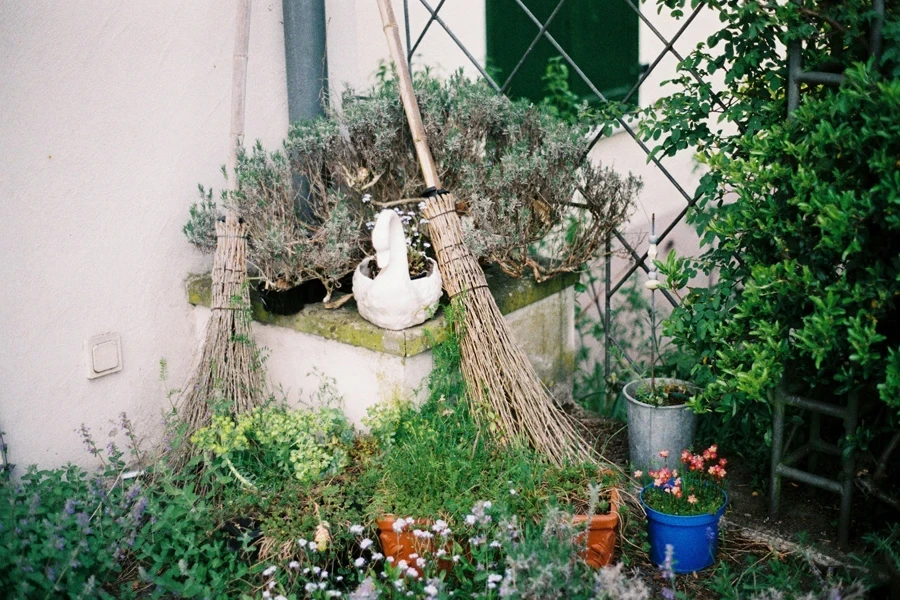
Material types
Metal dustpans are renowned for their exceptional durability, often constructed from stainless steel or galvanized metal to resist corrosion and damage from heavy-duty use. These dustpans typically feature reinforced edges to prevent bending under pressure, making them ideal for industrial environments. Plastic dustpans, typically made from high-density polyethylene (HDPE) or polypropylene, are valued for their lightweight nature and cost-effectiveness. These materials are resistant to cracking and can be molded into various shapes and sizes, catering to specific cleaning needs. Composite materials, such as fiberglass-reinforced plastic, combine the lightweight properties of plastic with the strength of metal, offering enhanced durability and flexibility, suitable for both commercial and residential applications.
Handle types
Short-handled dustpans, usually measuring around 12 to 18 inches, are designed for quick and convenient clean-ups, particularly in confined spaces. They often feature ergonomic grips made from rubber or foam to enhance comfort and control during use. Long-handled dustpans, with handles extending up to 36 inches or more, are engineered to minimize user fatigue by reducing the need for bending. These handles are frequently adjustable and made from lightweight aluminum or plastic, ensuring durability without adding unnecessary weight. Adjustable handle dustpans provide a versatile cleaning solution, allowing the handle length to be modified according to user preference, often featuring telescopic mechanisms for smooth adjustment.
Bristle types
Dustpans paired with natural bristle brooms typically use materials such as horsehair or tampico fiber. These bristles are highly effective in trapping fine dust particles and are gentle on polished surfaces, making them ideal for indoor use. Synthetic bristles, often made from nylon or PET (polyethylene terephthalate), are designed for durability and resilience, suitable for both indoor and outdoor cleaning tasks. These bristles are resistant to moisture and chemicals, ensuring longevity even in harsh environments. Rubber blades, used in specialized dustpans, are crafted from durable silicone or thermoplastic rubber (TPR), providing flexibility and strength for efficient sweeping on uneven surfaces and effective collection of both wet and dry debris.
Things to consider when selecting products
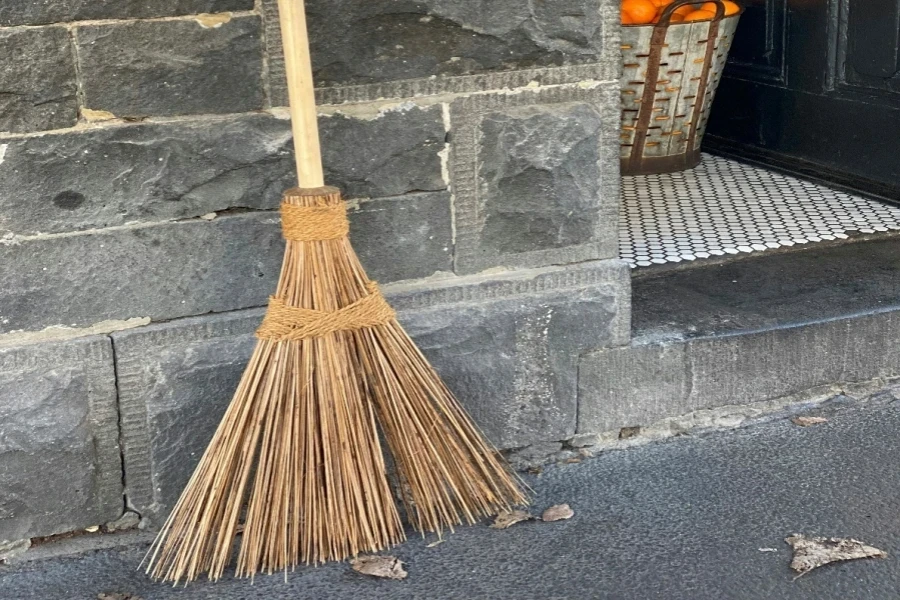
Broom size
Selecting the appropriate broom size is critical for achieving optimal cleaning efficiency. For expansive areas such as warehouses or commercial floors, brooms with a head width of 18 to 24 inches are recommended. These wider heads allow for significant coverage per sweep, thereby reducing cleaning time and labor. In contrast, smaller spaces like residential kitchens or office cubicles benefit from brooms with narrower heads, around 10 to 12 inches, which provide better maneuverability and access to tight areas. Additionally, the overall length of the broom handle, typically ranging from 48 to 60 inches, should be considered to ensure comfortable usage without excessive bending.
Bristle type
The effectiveness of a broom is heavily influenced by the type of bristles used. Natural bristles, such as those made from horsehair or tampico fiber, are excellent for fine dust and delicate surfaces. Horsehair bristles, for example, are naturally soft and can attract and hold dust particles due to their static properties. On the other hand, synthetic bristles, often made from durable materials like nylon or PET, are ideal for heavy-duty tasks and outdoor use. Nylon bristles are particularly resilient and maintain their stiffness over time, making them suitable for rough surfaces and debris. Rubber blades, used in brooms designed for wet and dry applications, are made from materials like thermoplastic rubber (TPR) and offer superior flexibility and durability for cleaning both smooth and uneven surfaces.
Broom head angle
The design of the broom head significantly affects its functionality in various cleaning scenarios. Angled broom heads, with bristles set at a precise angle, usually 45 degrees, are specifically engineered to reach into corners and along edges more effectively than straight broom heads. This design ensures that debris is gathered efficiently with minimal effort. Diamond-shaped broom heads provide enhanced maneuverability and can easily navigate under furniture and around obstacles, making them suitable for complex cleaning environments. Straight broom heads, while less specialized, offer consistent performance for general sweeping tasks on large, unobstructed floors.
Nesting design
Space-saving designs are a key consideration for the storage of cleaning tools. Brooms and dustpans that feature a nesting design can be compactly stored together, reducing the amount of required storage space. Look for models with handles that can lock into place or those that include integrated hanging loops or holes, allowing them to be suspended from hooks or pegs. This not only helps keep storage areas organized but also protects the broom bristles from deformation by keeping them off the ground and free from pressure.
Cleaning teeth
Dustpans with built-in cleaning teeth provide a practical solution for maintaining broom bristles. These teeth, usually molded along the top edge of the dustpan, allow users to comb out debris, hair, and dust that become entangled in the bristles. This feature prevents clogging and ensures that the broom remains effective throughout its use. Cleaning teeth can significantly enhance the longevity and performance of the broom by keeping the bristles clean and free from accumulated dirt.
Rubber lip
A dustpan with a rubber lip enhances the tool’s efficiency by providing a tight seal against the floor. The rubber edge ensures that fine dust and small particles are easily swept into the pan without slipping underneath. This is particularly important for achieving a thorough clean with minimal effort. Additionally, the rubber lip stabilizes the dustpan during use, preventing it from sliding and making it easier to collect debris in a single pass. High-quality rubber lips are often made from durable, flexible materials like thermoplastic elastomer (TPE), which provide a long-lasting and reliable performance.
Conclusion
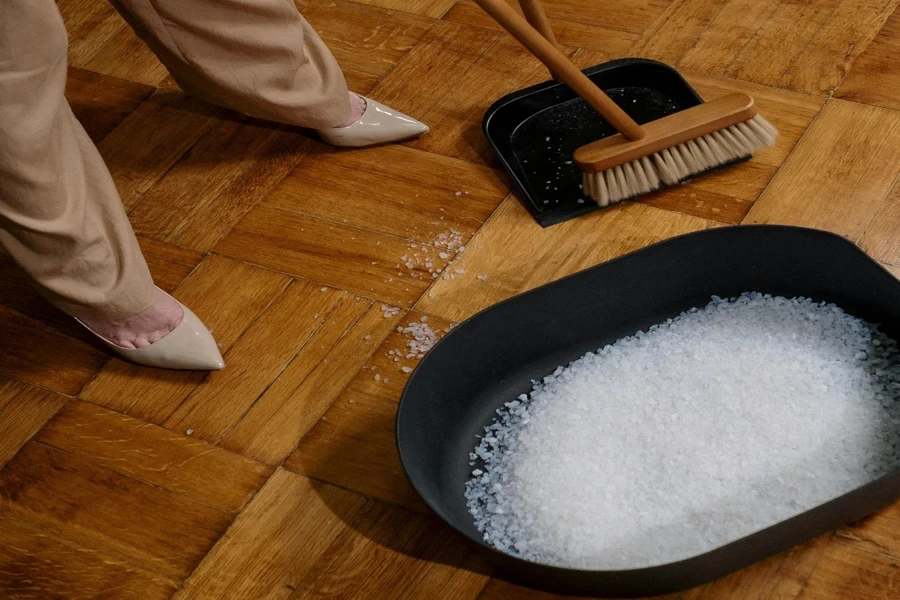
The brooms and dustpans market is experiencing steady growth, driven by increased demand for effective cleaning solutions and technological advancements. Different materials, such as metal, plastic, and composite materials, offer various benefits suited for residential, commercial, and industrial applications. Key features like broom size, bristle type, broom head angle, nesting design, cleaning teeth, and rubber lips are crucial considerations for selecting the best products. By understanding these market trends and technical details, businesses can make informed decisions to meet their specific cleaning needs efficiently and effectively.
